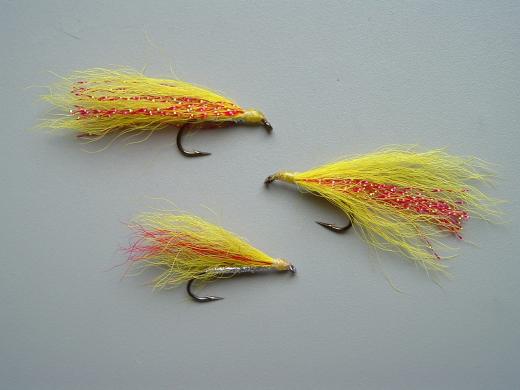Naming flies
FINS & FEATHERS
ASSASSIN
Raymond Kucharski
There are thousands and thousand of fly patterns. Everytime some one ties a different fly; they get to name that pattern. I have named all of my original flies, e.g. Special K an attractor bucktail, P-Square a nymph containing peacock herl and partridge and a HEP because it contained Hare’s Ear fur and Hungarian Partridge hackle. Not very original but easy to remember.
Some flies are simply named in the honor of the originator - the Hendrickson, Edson Tiger, Gibbs Striper Fly and the Wulff series. Other flies are named for the material used to tie them - the Squirrel Tail, Pheasant Tail and the Hare’s Ear nymph. Some flies for the bait it imitates - Red Ant, Mosquito, Black Midge, Black Gnat, Muddler Minnow and the Black Nosed Dace. Some time the name combines the tyer’s name and the material used - the Quill Gordan; material used and insect combined produce the Elk Hair Caddis.
Colors play an important role in the naming of flies. Black is commonly used, as well as other primary colors. More subtle colors are also used – Ginger Quill, Blue-Dun Spider, Brown Hackle, March Brown, Maple Syrup and the White, Gray, or Brown Wulff.
Flies are also named for the home waters it was used on or developed for – Parmachene Belle, Skykomish Sunrise and the Miller’s River Special (developed by Paul Kukonen of Paul’s Fly Shop in Worcester MA, my youth’s fly-tying mentor). Some are named after the tyer’s profession – Royal Coachman, Lady Doctor, Supervisor, Colonel Bates and the Wardens Worry.
Then there are the whimsical names – Greenwell’s Glory, Rat Faced MacDougal and Wickham’s Fancy. Some sound like Heavy Metal Rock bands – Chartreuse Zonker, Stimulator, Wooly Bugger, Blue Angel or the Zoo Cougar.
Flies can change their names through the course of time. A Green Spot became the Nine-Three after the newly developed fly caught a nine pound three ounce salmon.
Another name change occurred when William Mills & Son sold a series of six bucktails on various colors, one of which was called the Red & Yellow Bucktail. John Alden Knight, of Pennsylvania, fished the red and yellow fly successfully for squaretails, and popularized it in his writings. He renamed the fly, calling it the Assassin. Weber Tackle Company began to sell the fly under yet another name. It went on to be one of the most popular flies ever tied. The Assassin was re-named for the knock out drops put in drinks, as seen in the film noir genre of motion pictures. The fly was supposed too knock fish out; it was called the Mickey Finn.
C 2006-46


